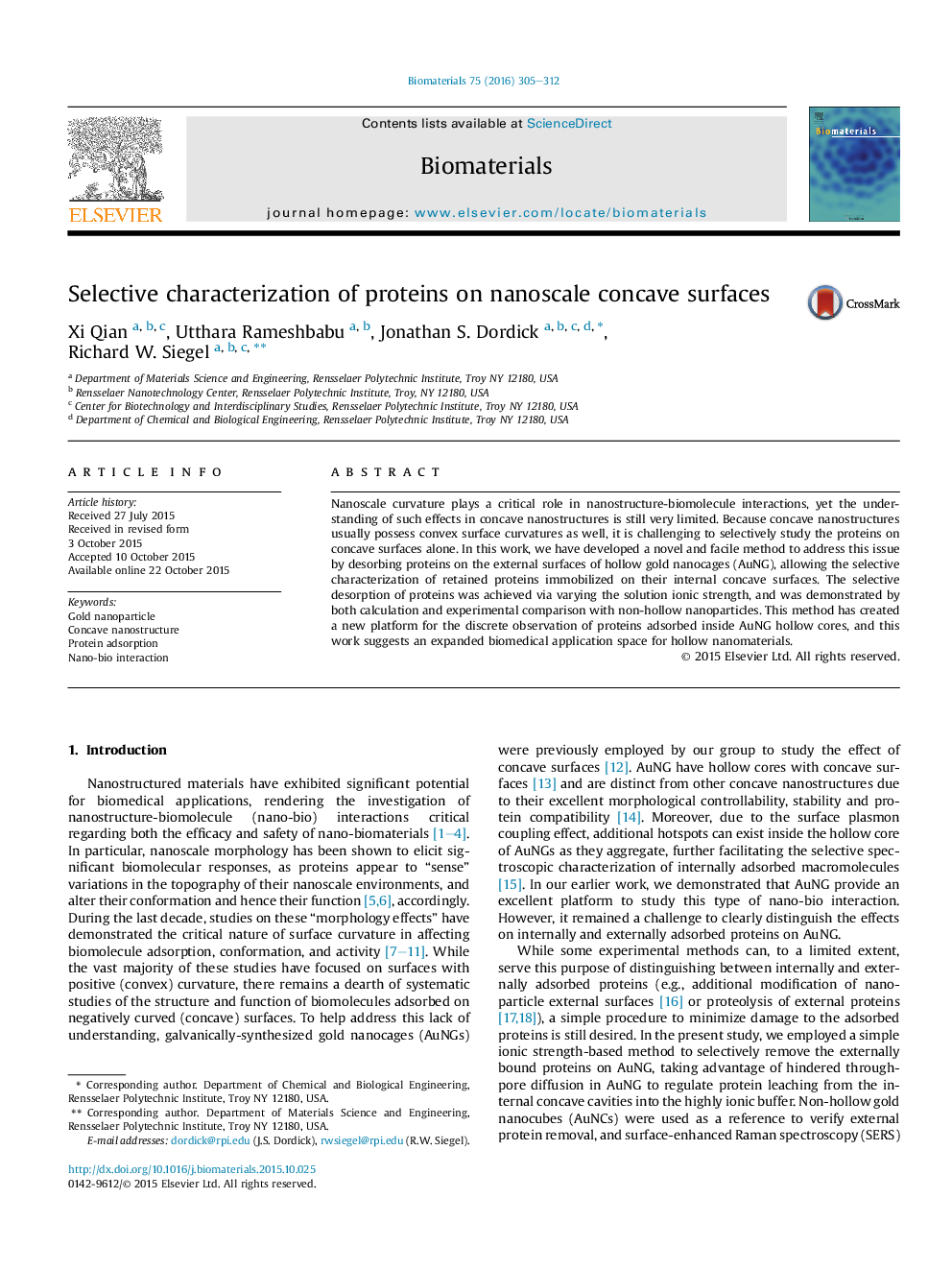| Article ID | Journal | Published Year | Pages | File Type |
|---|---|---|---|---|
| 5515 | Biomaterials | 2016 | 8 Pages |
Nanoscale curvature plays a critical role in nanostructure-biomolecule interactions, yet the understanding of such effects in concave nanostructures is still very limited. Because concave nanostructures usually possess convex surface curvatures as well, it is challenging to selectively study the proteins on concave surfaces alone. In this work, we have developed a novel and facile method to address this issue by desorbing proteins on the external surfaces of hollow gold nanocages (AuNG), allowing the selective characterization of retained proteins immobilized on their internal concave surfaces. The selective desorption of proteins was achieved via varying the solution ionic strength, and was demonstrated by both calculation and experimental comparison with non-hollow nanoparticles. This method has created a new platform for the discrete observation of proteins adsorbed inside AuNG hollow cores, and this work suggests an expanded biomedical application space for hollow nanomaterials.
Graphical abstractFigure optionsDownload full-size imageDownload high-quality image (318 K)Download as PowerPoint slide
